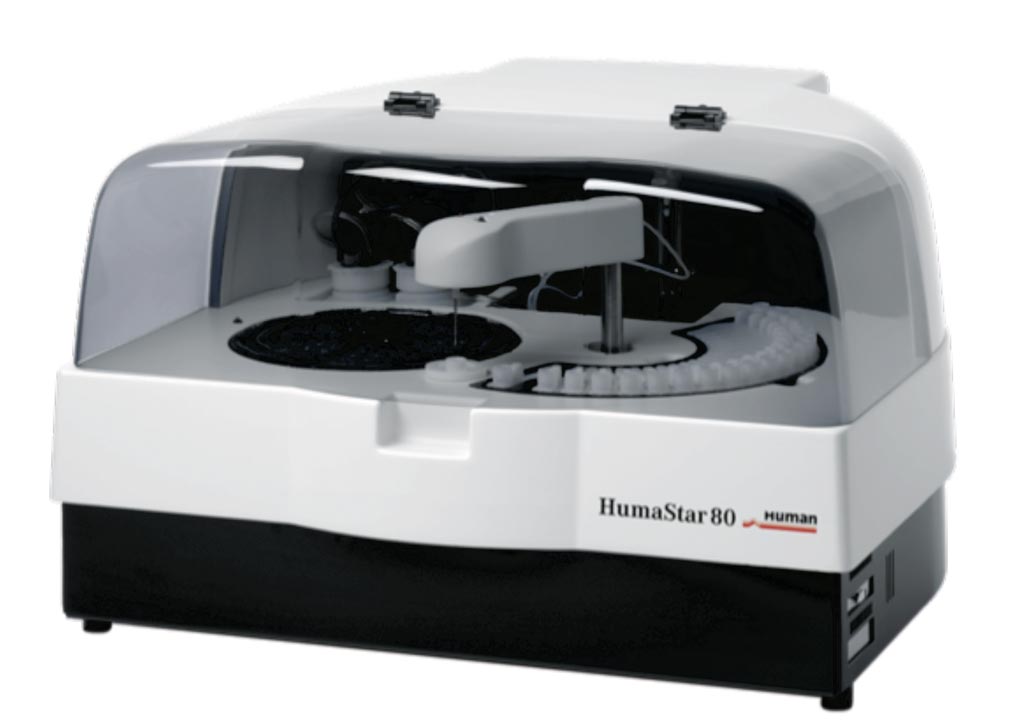Biochemical Changes in Stored Donor Units Analyzed
By LabMedica International staff writers
Posted on 12 Jul 2018
Blood transfusion with allogeneic blood products is a common medical intervention to treat anemia or prepare patients for surgical procedures and generally, the blood units are secured and stored prior to expected transfusion.Posted on 12 Jul 2018
During storage, several physical and biochemical changes take place in blood products that await transfusion, and the most affected product is whole blood. These changes known collectively as red cell storage lesion are progressive events that affect blood products stored for longer period than products stored for a short period.

Image: The HumaStar 80 clinical chemistry analyzer (Photo courtesy of Human Diagnostics).
Medical Laboratory Scientists at Mbarara University of Science and Technology (Mbarara, Uganda) recruited consecutively a total of 200 blood recipients were categorized into two study arms: group I of 100 received fresh blood and 100 in group II received old blood. A total of 2 mL of venous blood was collected from each participant in EDTA tubes before transfusion for pre-transfusion hemoglobin (Hb) estimation and after transfusion for post-transfusion Hb estimation. Each cross-matched unit was sampled to collect plasma for pH, lactate and potassium assays.
The Hb level was estimated using a Beckman Coulter Diagnostics full hemogram machine; donor lactate level was determined using HumaStar 80; and the potassium and pH in the donor units were determined by Human Diagnostics’ HumaLyte assays. Donor units were cultured in blood agar medium and incubated for 24 hours at 37 °C.
The team reported that the pH of the stored blood dropped from 7.4 to 7.2 in the first three days to ~7.0 by day 11 and to <7.0 by day 35. The mean rise in lactate level was 25 g/dL in blood stored for 0 to 11 days and 32.4 g/dL in blood stored for 21 to 35 days. The highest increase was encountered in blood stored beyond 28 days: 40–57 g/dL by 35 days. Potassium levels equally increased from ~4.6 mmol/L in the first five days of storage to ~14.3 mmol/L by 11 days. From the third week of blood storage and beyond, there was exponential increase in potassium levels, with the highest record in blood units stored from 30 to 35 days.
The authors concluded that whole blood stored for more than 14 days has reduced efficacy with increased markers of red cell storage lesion such as increased potassium level, lactate and fall in pH and these lesions increase the length of hospital stay. The study was published on June 25, 2018, in the Journal of Blood Medicine.
Related Links:
Mbarara University of Science and Technology







 Analyzer.jpg)





